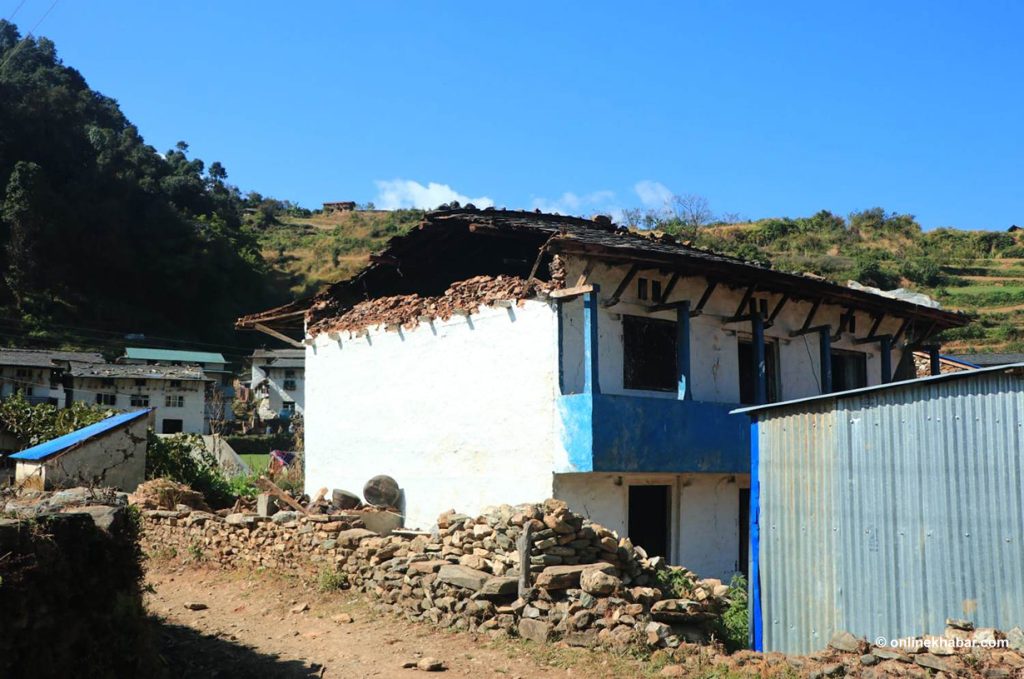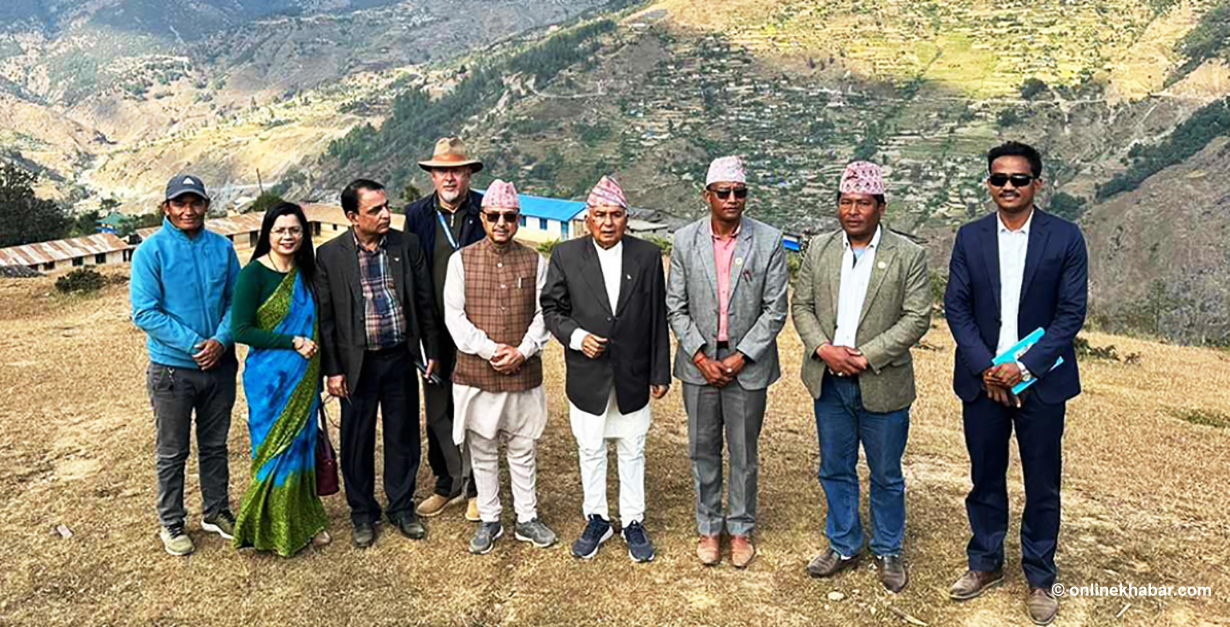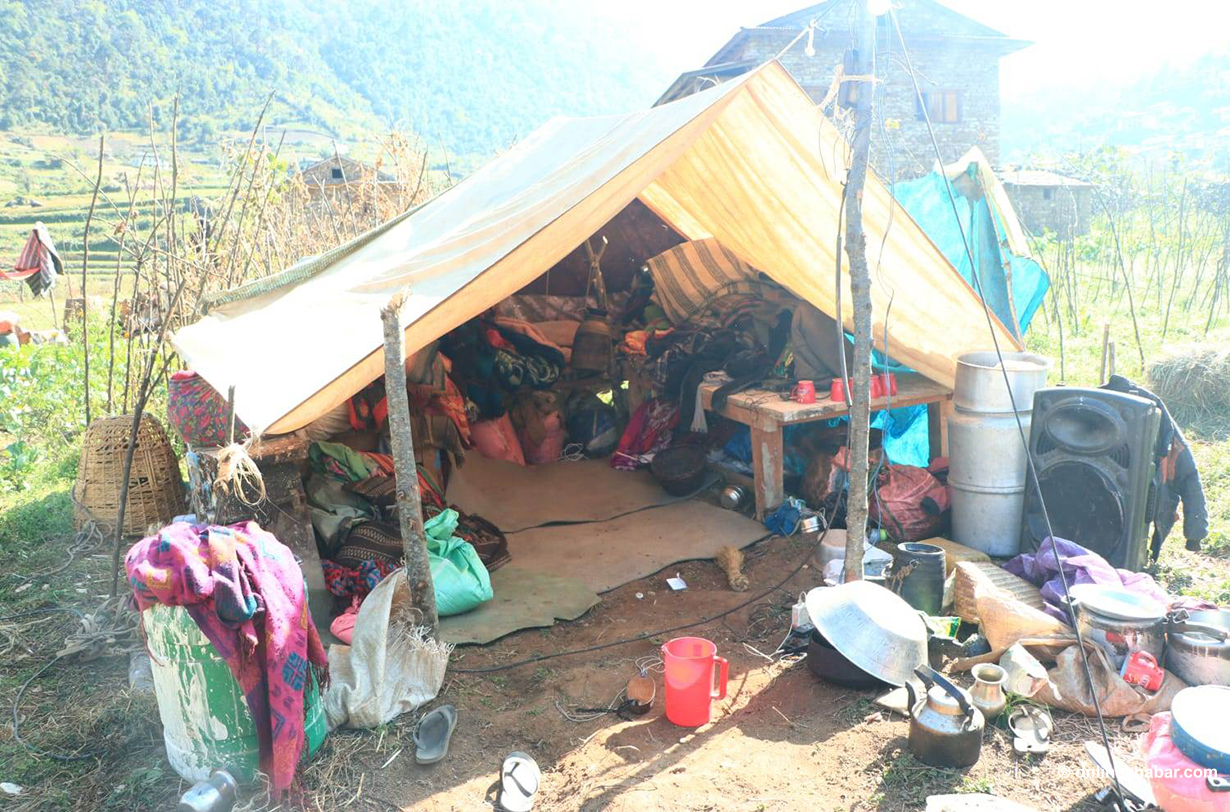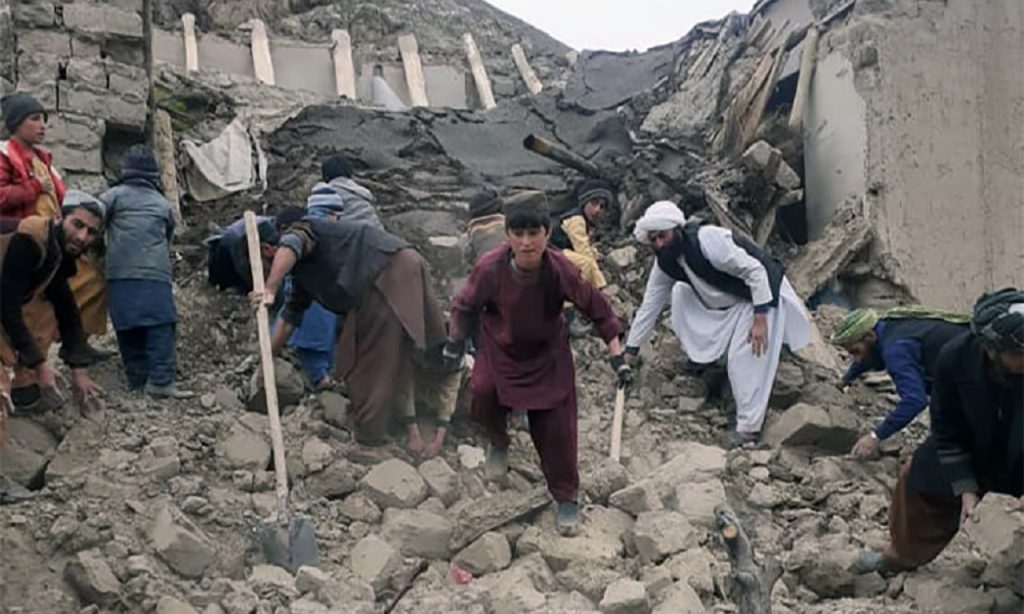
Jajarkot, November 8
Under the Jajarkot-Dolpa Road section, an inner road connects Kalimati to Nalgad. The distance from Nalgad to Ramidanda, the epicentre of the November 3 earthquake, is just 26 kilometres. However, the road is treacherous, and it takes at least two to three hours to reach there by vehicle. After the earthquake, the motorable road, which was constructed by carving the hills, has been continuously blocked in various places.
“With aftershocks continuing, we still haven’t received relief materials,” says Ramesh Bikram Hamal, a youth from Surkhet who has reached the earthquake’s epicentre in Ramidaanda. “The road is tough and difficult to travel, and we haven’t seen anyone come for relief and rescue in the affected areas like Sirpachaur.”
It takes approximately one and a half hours to reach Nalgad Municipality from Khalinga in Jajarkot. Since the road to get there is easy, almost all relief efforts are focused on these areas. But, Ramidanda, which is hard to get to is getting overlooked, say locals.
On November 3, the earthquake’s epicentre in Barekot, Rukum West, resulted in severe damage, significantly altering the geography of the area. Many houses have been destroyed, and delivering relief materials to places such as Sirpachaur, Jiri, Limsa, Nayakwada, and other surrounding areas has proven to be a challenge.
Around 4,300 houses in Barekot have been affected by the earthquake, and the locals are in distress, says Bir Bahadur Giri, the chairperson of Barekot Rural Municipality.
“All the houses, which look intact from the outside, have cracks inside,” says Giri. “People are afraid to enter their cracked houses as the area is facing continuous aftershocks.”
The most affected area in Barekot Municipality is Sirpachaur, where locals continue to live in fear. On November 7, at 4.31 pm, an aftershock of 5.8 magnitude hit Barekot destroying 31 houses in Sirpachaur and injuring three locals. Among them, two have been sent for further treatment in Nepalgunj.
With the recurrent aftershocks, Khadga Bohora, 36, is afraid to stay inside his home, which is made of mud and stones.
“Our house has cracks. It can crumble anytime,” says Bohora who has set up a temporary shelter in front of their house but they still fear landslides during aftershocks. “We don’t know what to do.”
After spending four days under the open sky, hoping for tents, tarpaulins, and relief supplies, the majority of the locals have constructed makeshift shelters for themselves. Some are seeking refuge in schools and other improvised structures while awaiting relief materials.
President’s visit and insufficient relief materials

President Ram Chandra Paudel also flew to Ramidaanda on a helicopter and returned after inspecting the situation on Tuesday.
Upon reaching the earthquake-affected districts of Karnali, he observed the situation and gathered information about the damage, relief distribution, and post-earthquake reconstruction from the local administration.
Paudel was accompanied by Deputy Prime Minister and Defense Minister Purna Bahadur Khadka, Karnali Province Minister for Economic Affairs Bhedaraj Singh, and Karnali Province Assembly Member Rajeev Bikram Shah, who inspected the situation.
Despite visits from the president, prime minister, deputy prime minister, and provincial ministers, the absence of relief materials has compounded the suffering of the people in the area.
Hari Bahadur Gharti’s house in Sirpachaur was constructed from mud and stones. When the earthquake struck and caused extensive damage, his family erected a makeshift shelter outside their house. With four rooms destroyed in the two-story building, five members of his family are now without a home.

In Sirpachaur, the cold is particularly severe, especially from November to January. The place receives heavy snowfall as well. Presently, the cold has become even more intense in Sirpachaur. Those affected are compelled to reside in makeshift shelters, with a majority of houses either abandoned or in a state of disrepair.
The affected individuals are enduring hardship, as their clothing, food, and possessions have all been ruined. The plight of the families of those affected and distressed is truly heart-wrenching.
Out of the 4,300 affected houses in Barekot, 1,900 blankets and 720 tents have been received as relief so far.
“We began distribution of relief materials on Tuesday, and we are working diligently to assist all the affected individuals,” says Giri.























